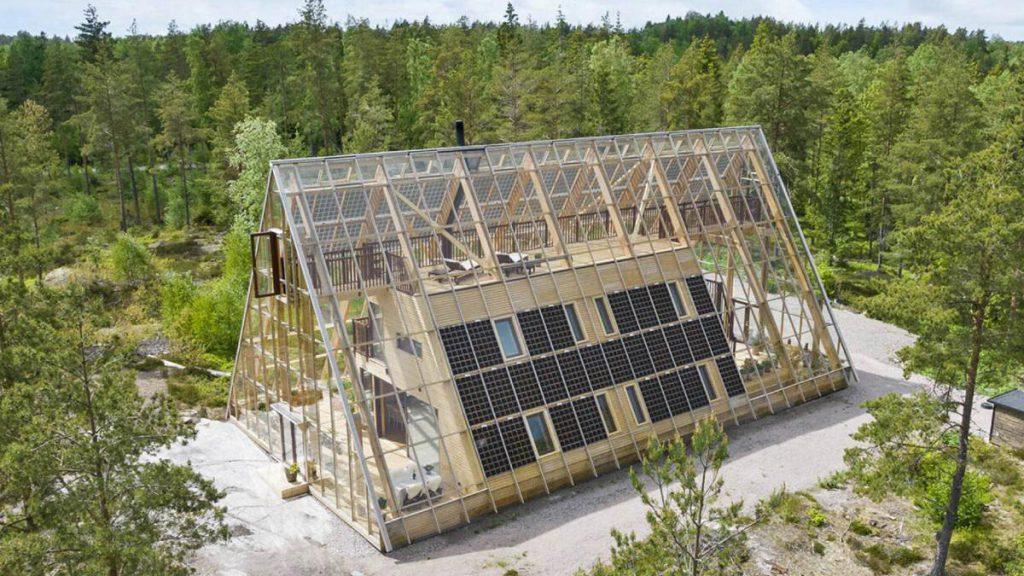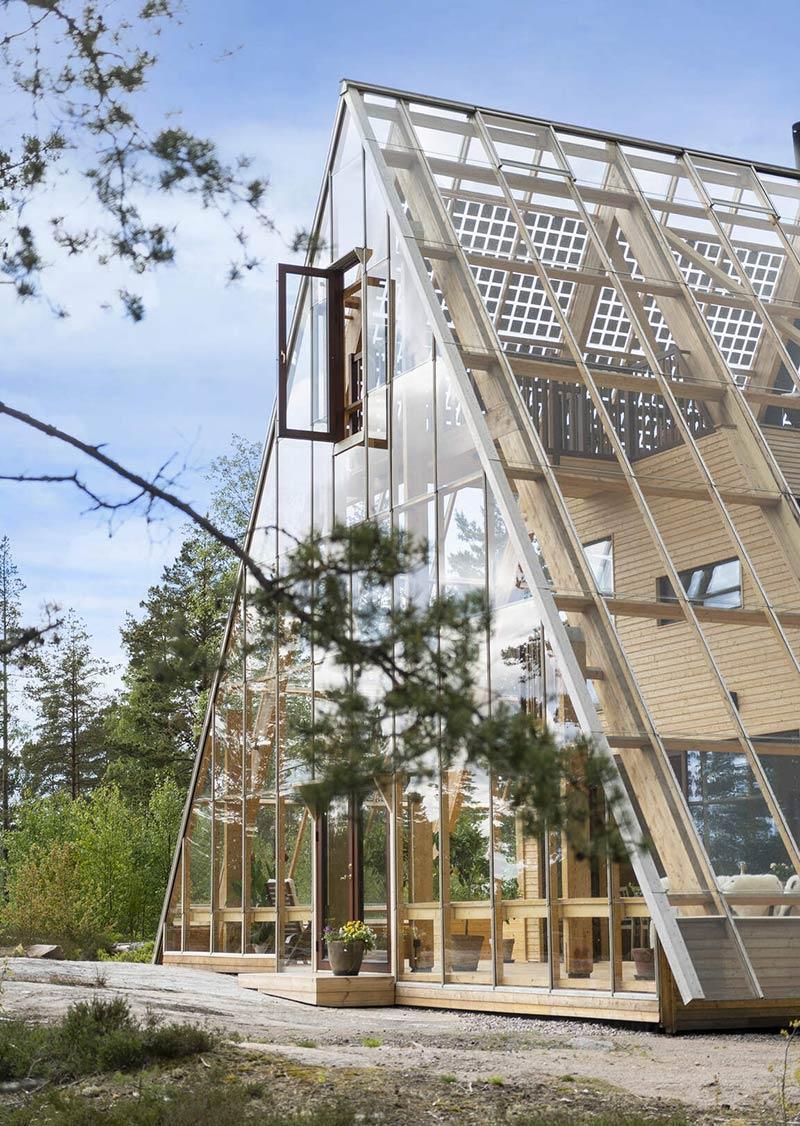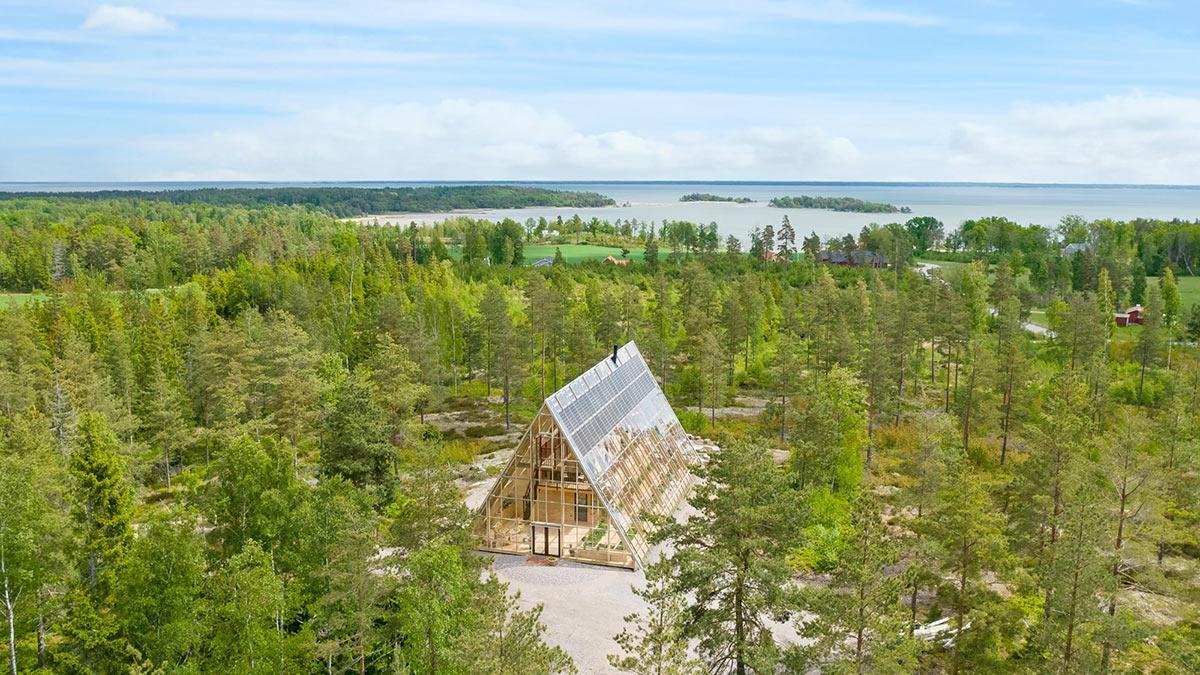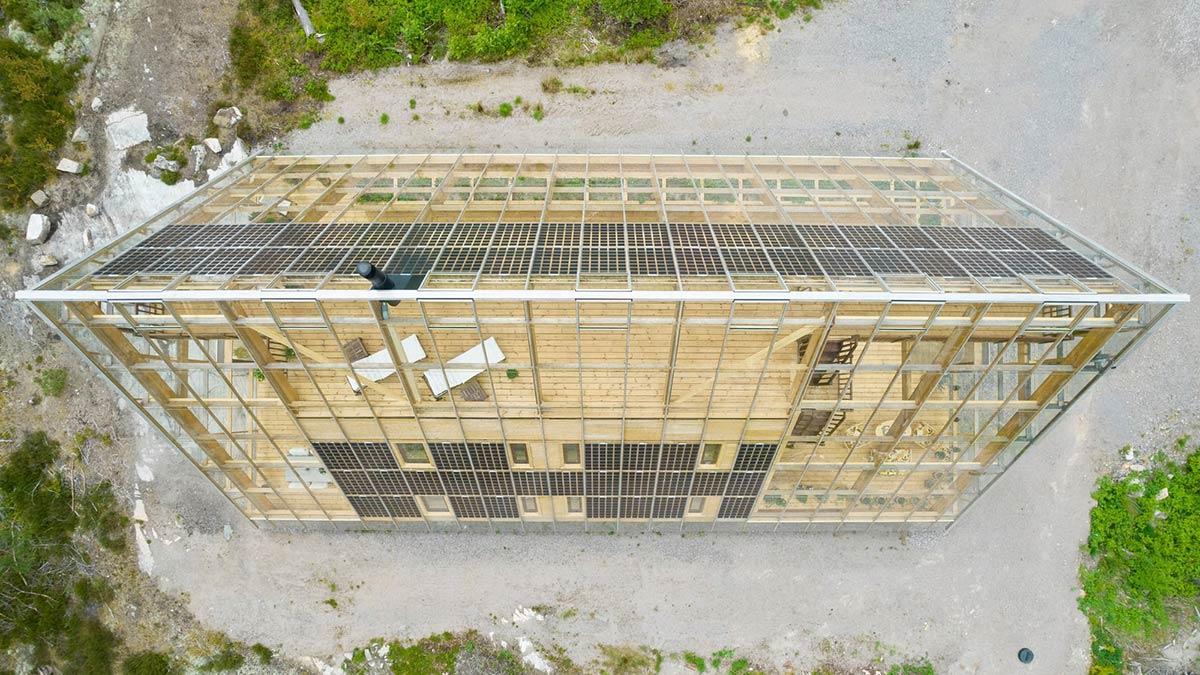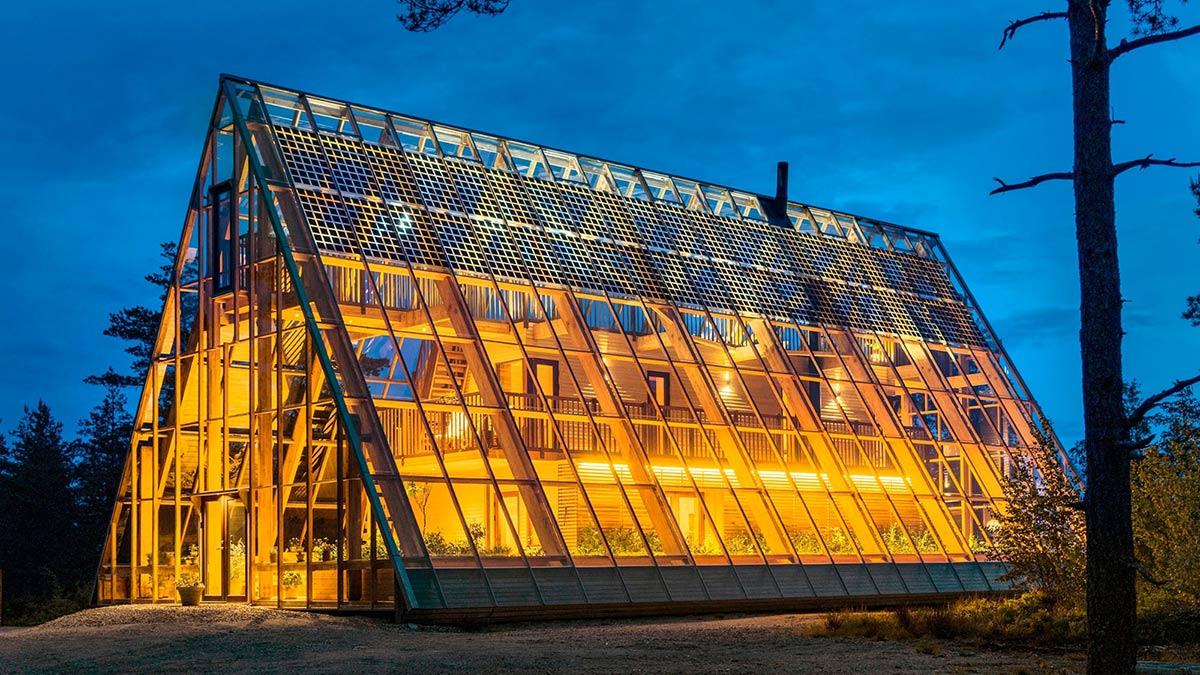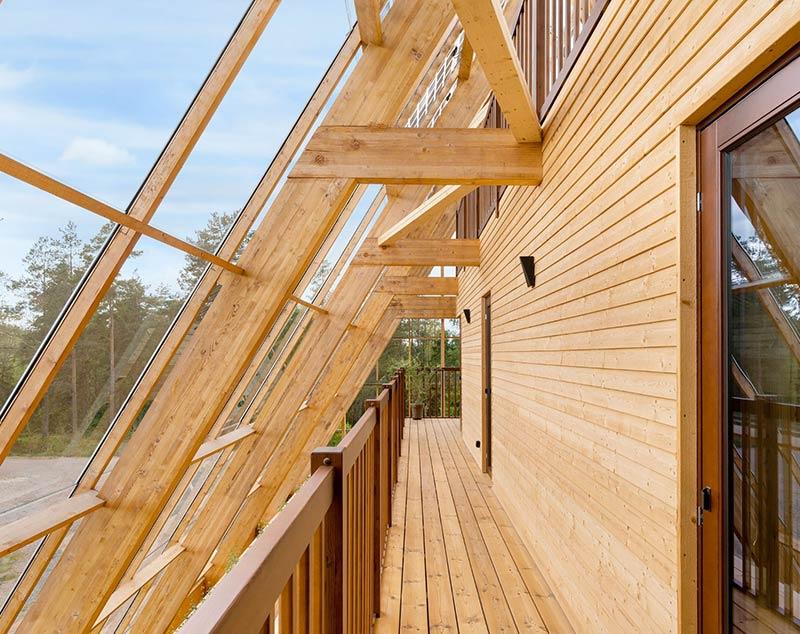Self-sufficiency under glass
Rising energy prices won’t affect people who live in Atri, a building designed by Swedish provider Naturvillan. They will be wholly self-sufficient with solar energy, home-grown vegetables and a water treatment plant.
The idea of living under glass is credited to Swedish architect Bengt Warne, who developed the concept of the naturhus – nature house – back in the 1970s. A sustainable eco-house with a core living area is surrounded by an insulating glass shell. This creates a protected outdoor area that not only improves the quality of life in the cold winter months but also allows vegetables to be grown all year round. Anders Solvarm’s response to the question he is asked most often is: “On average, this construction allows you to reduce energy consumption by 30 percent”.
On average, this construction allows you to reduce energy consumption by 30 percent.
Anders Solvarm, founder of Naturvillan
Solvarm founded the company Naturvillan in spring 2022 together with his colleague Niklas Dahlström. The timing couldn’t have been better. Particularly given rising inflation and the massive increase in energy prices, demand for what they call the “next-generation nature house” is positively booming.
Long-term investment
They completed the Atri model prototype after a lengthy construction phase caused by the pandemic. The house – located in the heart of a pine forest outside Vänersborg, the capital of the Västra Götaland region – is not connected to the power grid or sewerage system. This means that it corresponds to the pioneering ideal originally espoused by Bengt Warne: self-sufficiency in all respects.
Anders Solvarm, who has been living with his family in a glass-covered log cabin for 15 years, explains that, even though a nature house is more expensive at first, it is a smart investment: “If you view a house like this over a period of 50 years and factor in the energy and food it produces, it’s a wholly different story”. Investing in complete self-sufficiency is definitely worthwhile over the long term. In any case, nature house residents are not affected by the currently high energy costs.
Solar power and water cycles
Atri is a climate-friendly house that produces electricity via photovoltaic panels that are integrated into the glass roof and feed the central battery. In the winter, hot water and heating come from a wood-fired stove in the kitchen that is also used for cooking. On very dark winter days, residents should keep a close eye on the battery level and how much power they are using. Alternatively, the battery can also be charged with an emergency generator.
The house, which has a striking tent-like shape, has its own drinking water that is pumped from a well. Wastewater is biologically treated via the plant beds in the glass house, which are therefore supplied with micronutrients as well. The cycle comes full circle when the home-grown fruit and vegetables are harvested.
After around 20 years, the additional costs pay off and the house begins to produce more than it needs.
Anders Solvarm, founder of Naturvillan
Thanks to its holistically self-sufficient design, the natural house has a minimal ecological footprint. The glulam timber framework also helps to reduce the emissions caused by the construction process. As well as this, the wood itself acts as a carbon sink, retaining CO₂ over the long term.
Mediterranean climate in the High North
The protective glass shell means that the residential and garden areas have plenty of light. And it also gives a constant view of the surrounding landscape. There is a fluid border between inside and outside. Atri allows people to live under the open skies – even in the High North. As Naturvillan’s advertising slogan puts it: “Sustainable living in a Mediterranean climate”.
The prototype of the house on Lake Vänern, about an hour’s drive from Gothenburg, went up for sale in 2022. The asking price amounted to around €715,000, but Solvarm sees it as a smart investment: “After around 20 years, the additional costs pay off and the house begins to produce more than it needs.”
Text: Gertraud Gerst
Translation: Rosemary Bridger-Lippe
Photos: Marcus Eliasson, Naturvillan
